Last Updated on June 9, 2025 by Team Ideas24
The human body is designed for movement. This explains why you feel stiff after a long day at work. You usually sit there for long periods, in the same fixed posture. If only you can work standing up, right? Well, with a height adjustable height table, you actually can.
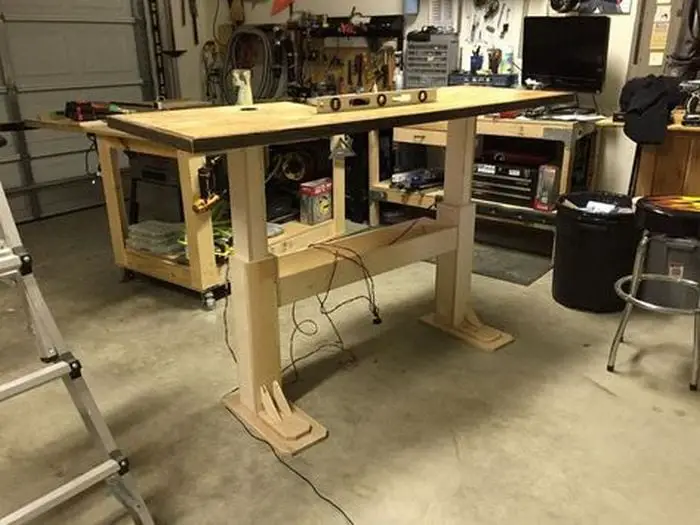
An electric height-adjustable desk costs around 1,000 dollars. Yes, it’s really expensive if you buy one. But you can save a lot by building your own. It may take more time and effort but you’ll spend nowhere near the thousand-dollar price tag.
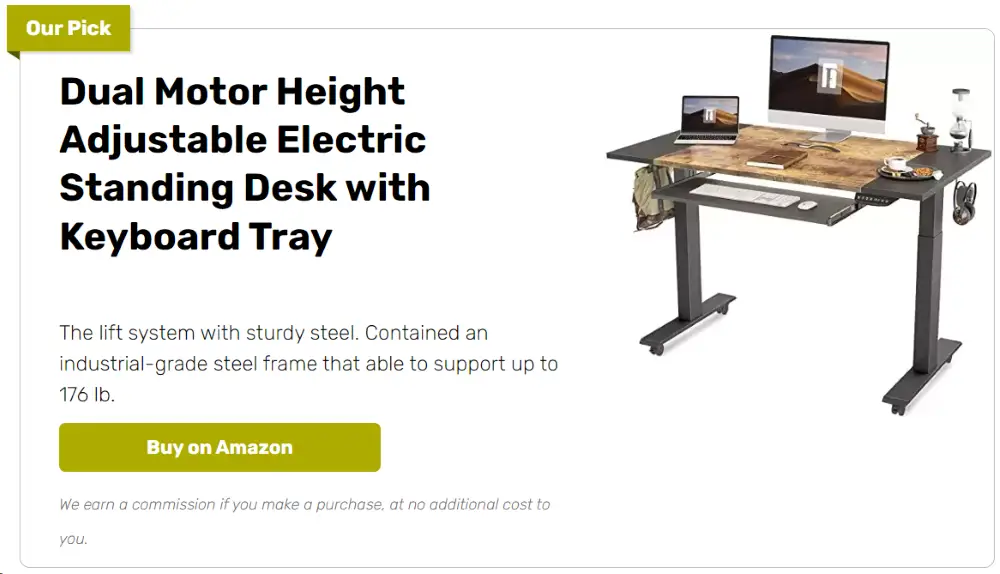
This DIY electric height adjustable desk is so convenient. A push of a button will turn it into a standing desk. Another button pushes and it’s back to its original position.
Since there’s electrical work involved, you may want to get help if you don’t know how. But if you do, then roll up those sleeves and get to work!
Contents
Building an Electrical Adjustable Height Table
Materials:
- Pair of linear actuators
- Premium pine
- 12v power supply
- wire
- screws
- electrical tape
Tools:
- miter saw
- drill
- clamps
- wire cutters
- stapler
Steps:
- First gather all materials and tools. You need a pair of linear actuators, premium pine, a 12v power supply, wire, screws, and electrical tape. You also need a miter saw, drill, clamps, wire cutters, and a stapler.
- Cut four pine legs to your desired height using the miter saw. Clamp each piece for a clean, square cut. Keep all legs identical.
- Build a rectangular pine frame for the tabletop. Drill pilot holes at each corner. Secure joints with screws.
- Mount the linear actuators under the frame on opposite sides. Place them parallel and level. Secure them with screws.
- Wire the actuators to the 12v power supply. Strip wire ends with the wire cutters. Connect wires and wrap each joint in electrical tape.
- Test the actuators by powering up the unit. Press the control to move the table up and down. Check for smooth movement.
- Attach the tabletop surface to the frame with screws. Make sure it sits square. Tighten all screws evenly.
Ergonomic Benefits of Adjustable Height Tables
Adjustable height tables let you alternate between sitting and standing to support a healthier workday. They help you avoid stiffness and muscle strain for better long-term comfort.
Improved Posture
Adjustable height tables let you switch between sitting and standing positions to align your spine naturally. Standing reduces slouching in your lower back. Alternating posture helps maintain the natural curve of your spine. It reduces pressure on your discs and muscles. When you adjust desk height to elbow level you’re more likely to maintain a neutral posture. This simple change can make a big difference in daily comfort and reduce long-term pain.
Reduced Back Pain
Standing periodically eases the constant pressure that sitting places on your lumbar region. It shifts load from cushions to your legs and feet. This helps relieve tension and prevents lower back pain. Adjustable desks let you find the perfect height to keep your spine comfortable. You’ll notice less stiffness after hours of work. Over time this reduces the risk of chronic back issues.
Enhanced Circulation
Standing encourages blood flow through your legs and core. It prevents the pooling of blood in your lower extremities. Improved circulation reduces swelling and soreness in your feet and ankles. Alternating positions keeps your muscles active and alert. You’ll feel less fatigue and more energy as your circulation improves. This benefit supports overall cardiovascular health over the long term.
Increased Energy and Focus
Standing boosts your heart rate slightly, sending more oxygen to your brain. This can improve alertness and concentration during work tasks. Changing positions breaks up sedentary habits that sap your energy.
You’re more likely to stay engaged and productive throughout the day. Small posture shifts reduce afternoon slumps and mental fatigue. Over time you’ll build stamina for longer, more focused work sessions.
Lower Risk of Musculoskeletal Issues
Prolonged sitting can contribute to chronic neck, shoulder, and hip problems. Adjustable height tables encourage movement and reduce static postures. Regularly changing positions prevents tightness in your joints and muscles.
It promotes balanced use of different muscle groups throughout the day. You’re less likely to develop repetitive-strain injuries or postural imbalances. This protects your body for years of comfortable work.

Electric vs Manual Adjustment Mechanisms
Choosing between electric and manual lift options affects usability and maintenance. Each mechanism offers unique benefits in cost, convenience, and durability.
Electric Adjustment Overview
Electric adjustable tables use motor-driven actuators to raise and lower the desktop at the push of a button. They offer smooth, precise height changes without manual effort. You can program presets for favorite heights. This is ideal for users who switch positions often or share desks. Electric systems tend to cost more upfront but deliver effortless operation. They also add a modern touch to any workspace.
Manual Adjustment Overview
Manual height-adjustable tables use hand cranks or gas-spring mechanisms for lifting. You turn a handle or trigger a lever to change height. These systems cost less and require no electrical wiring. They’re lighter and easier to transport than electric models.
You’ll need some physical effort to adjust the desk, which may suit users who change positions less frequently. Manual options work well in low-budget or mobile setups.
Speed and Convenience Comparison
Electric tables adjust quickly with minimal noise and no physical strain. You simply press a button and wait a few seconds. Manual tables require a bit of crank time and effort at each adjustment.
If you switch positions frequently, this can interrupt workflow. Electric mechanisms excel in fast-paced or shared environments, while manual options remain reliable when power access is limited.
Maintenance and Reliability
Electric systems involve motors, controllers, and wiring that may need occasional servicing. You should inspect cables and connections for wear. Manual systems have fewer moving parts and lower risk of mechanical failure.
Cranks and levers might need lubrication or tightening over time. Manual desks often endure heavy use with minimal upkeep. Electric desks require more careful handling to extend their lifespan.
Cost and Budget Considerations
Electric adjustable tables carry a higher initial price due to motors and electronics. You’ll pay more for convenience but less for physical effort. Manual tables cost less upfront and have lower repair costs.
They’re ideal if you need a budget-friendly solution. Over time electric desks may save money by boosting productivity. Manual desks save money on electricity and technical support.
Adjustable Height Table Gallery
Click on any image to start the lightbox display. Use your Esc key to close the lightbox.


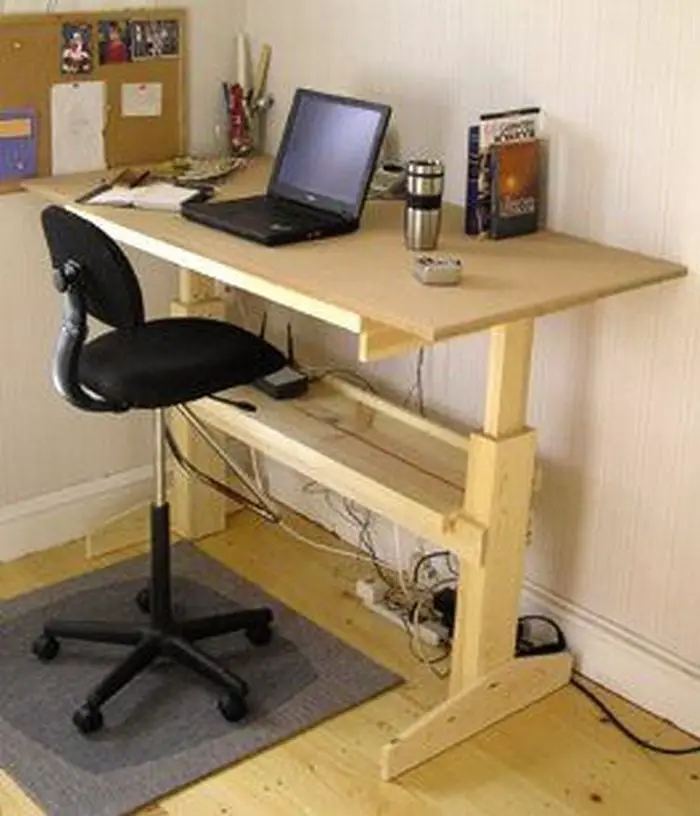
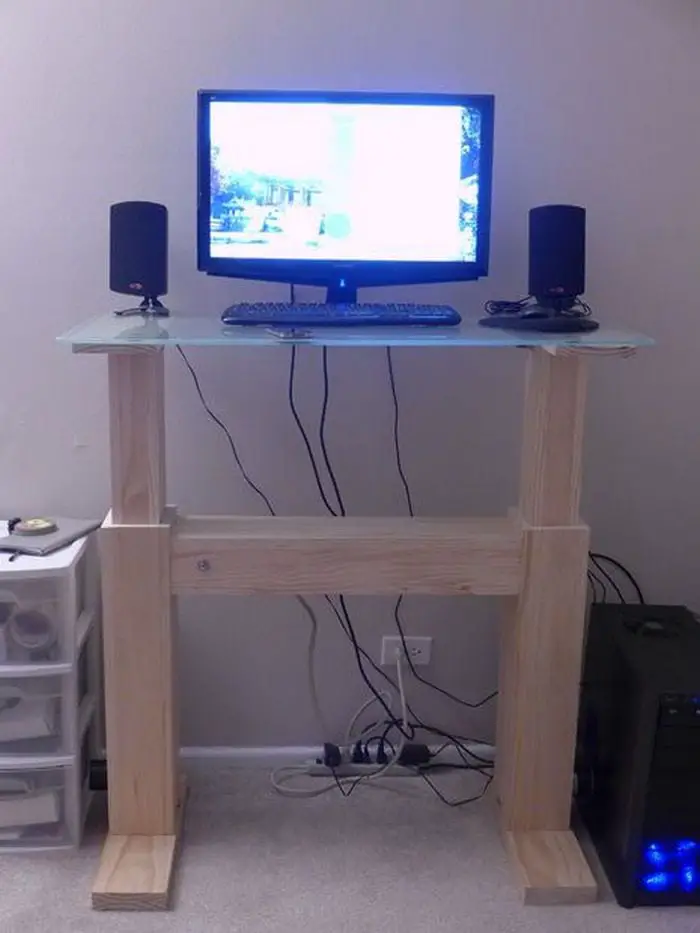

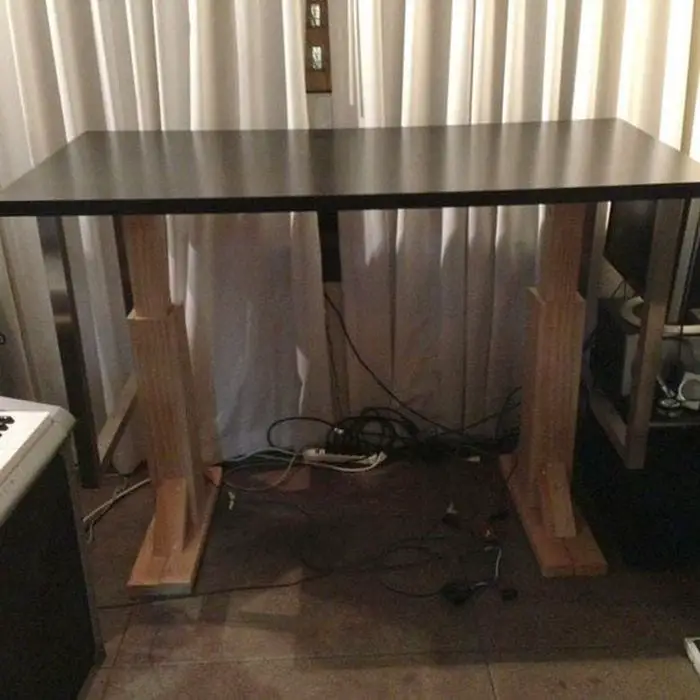

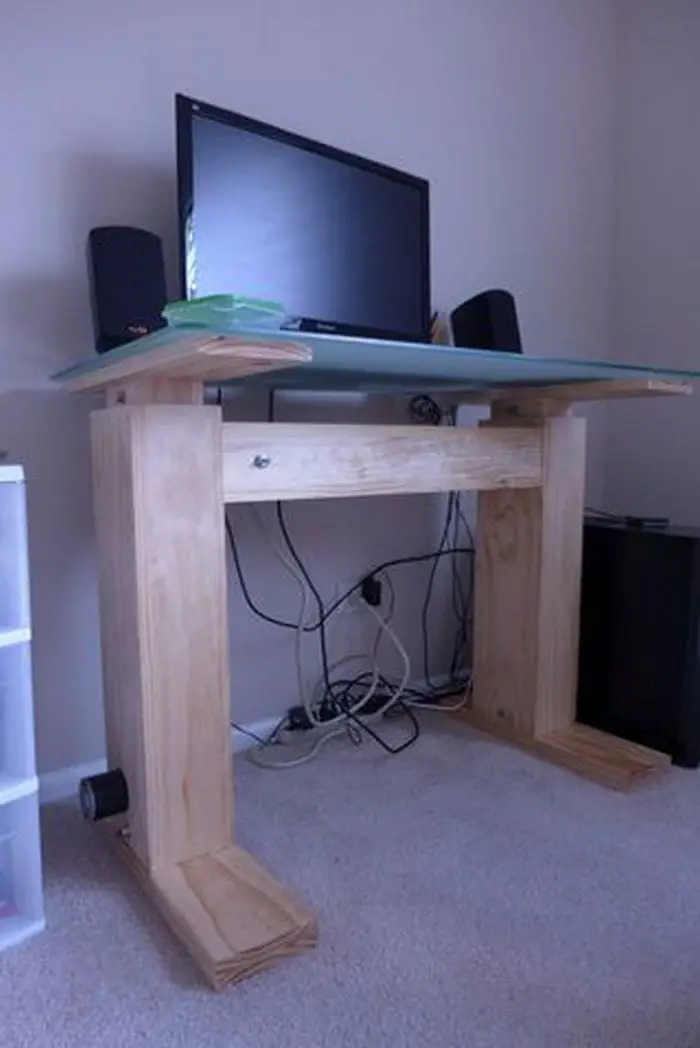
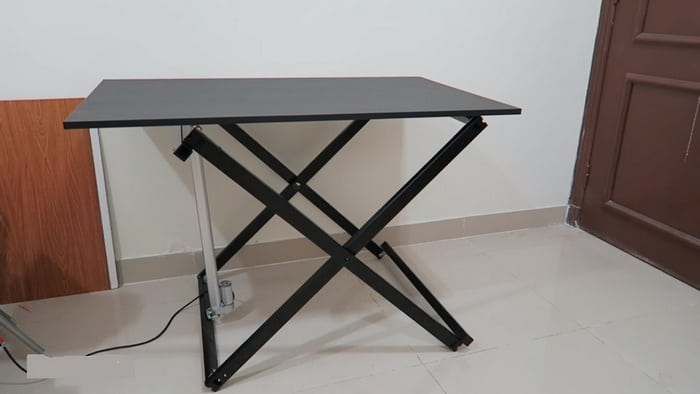
Selecting Quality Linear Actuators and Motors
Choosing the right actuators and motors ensures smooth, reliable table movement. Quality components affect noise levels, speed, and long-term performance.
Load Capacity Assessment
You must match actuator load ratings to your desktop weight and expected cargo. Check the maximum weight each actuator can lift safely. Add a safety margin of 20–30 percent to account for extras like monitors or paperwork.
Undersized actuators will strain and burn out prematurely. Proper capacity prevents jerky motion and extends motor life. This step protects your investment and maintains consistent performance.
Speed and Precision Requirements
Actuator speed determines how quickly your table moves between heights. Faster actuators save time when switching positions frequently. Precision controls let you stop at exact heights for ergonomic comfort.
Motors with built-in feedback systems improve accuracy and repeatability. Balance your need for speed with smooth, vibration-free operation. Choose components rated for consistent performance under full load.
Noise Level Considerations
Noisy actuators can distract you and co-workers during height adjustments. Look for motors specified for low-dB operation. Brushless DC motors often run quieter and offer longer lifespans.
Rubber mounts and vibration dampers further reduce noise and rattling. Quieter systems enhance focus and create a more professional workspace. Always test noise levels before final installation if sound matters.
Durability and Build Quality
High-quality actuators use hardened gears, sealed bearings, and robust housings. These features resist dust, moisture, and wear over time. Cheaper units may use plastic gears or exposed mechanisms that fail sooner.
Stainless steel or anodized aluminum bodies improve corrosion resistance. Check for IP ratings and load cycle warranties. A durable actuator minimizes downtime and maintenance needs.
Warranty and Technical Support
Reliable manufacturers back their actuators and motors with multi-year warranties. Look for at least a one-year repair or replacement guarantee. Good technical support can help with installation and troubleshooting.
Local distributors often provide faster service and spare parts. Confirm return policies before purchase. Strong after-sales support ensures your adjustable table stays functional for years.
Conclusion
Adjustable height tables transform your workspace by promoting better posture and reducing strain. You can choose an electric or manual mechanism based on convenience and budget. High-quality linear actuators ensure reliable, quiet operation for years. Prioritize safety and durability when selecting motors and wiring components. With the right design and parts, you’ll enjoy a more comfortable and productive work environment.
We have more ways to keep your home office productive. Check out our DIY desk organizer project next!




